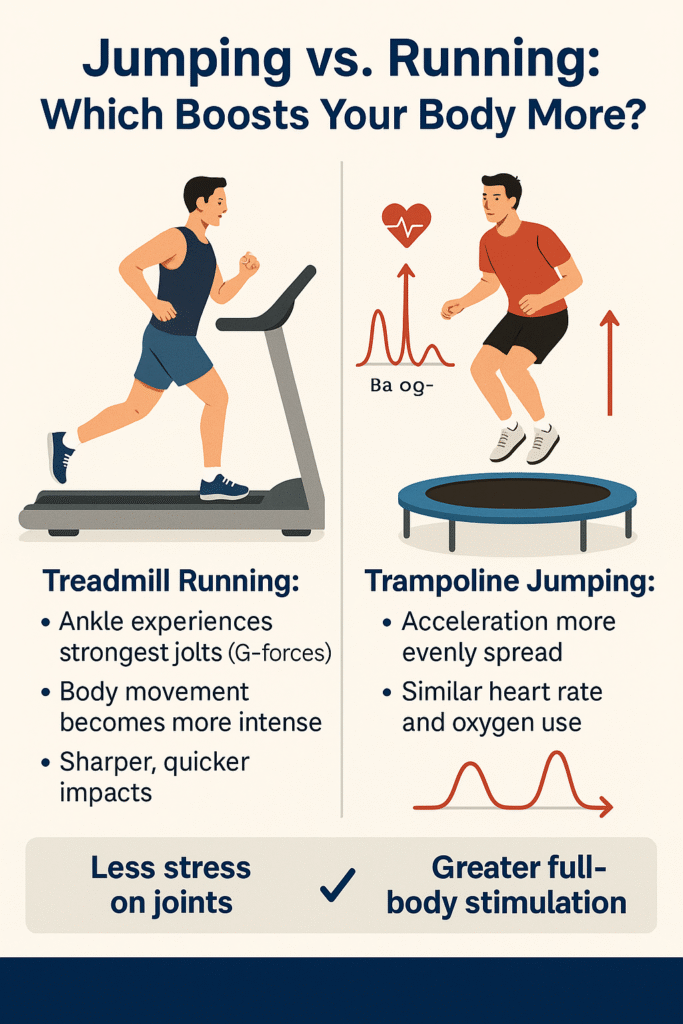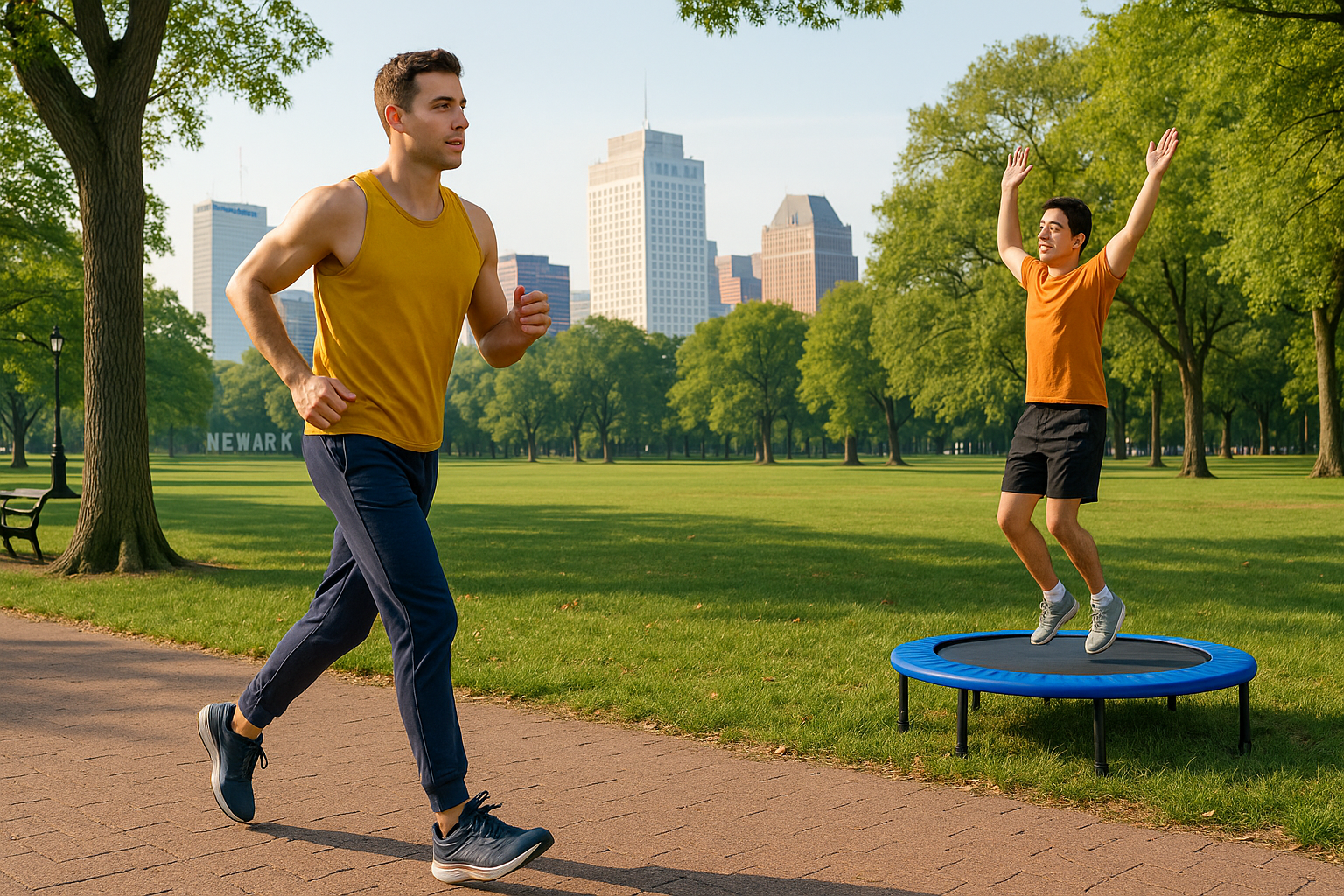🚀 A NASA-Backed Look at Fitness
You think trampoline jumping is just for kids? Think again.
NASA researchers conducted a scientific study comparing treadmill running and trampoline jumping, and the results might make you rethink your workout routine.
Their goal is to explore how the human body responds to different types of physical activity—and how to maintain health in zero gravity environments like space. Surprisingly, what they found is just as useful for us here on Earth.
📖 Study Source:
NASA Technical Memorandum: “Body Acceleration Distribution and O₂ Uptake in Humans During Running and Jumping” (1981)
🧪 What the Study Tested
NASA’s research measured:
- Body acceleration (force of movement) at the ankle, back, and head
- Oxygen uptake (VO₂) – a key indicator of cardio intensity
- Heart rate – to track overall exertion
They compared these metrics during:
- Treadmill running at different speeds
- Trampoline jumping at different heights
🏃 Running: Powerful but Focused Impact
During treadmill running, they found that the ankle experienced the strongest shock with every step. Also, acceleration was concentrated primarily in the lower body and as speed increased, impact intensity rose sharply.
✅ Running is great for:
- Building leg strength
- Improving endurance
- Burning calories quickly
🚫 But it’s hard on:
- Knees
- Ankles
- Lower back
🤸 Jumping: Full-Body Benefits with Lower Stress
When the same participants jumped on a trampoline, the study revealed that the acceleration was more evenly distributed across the body. Participants Heart rate and VO2 matched those of treadmill running. Also, muscles in the entire body were engaged significantly than the running.
✅ Jumping is ideal for:
- Joint-friendly cardio
- Recovery workouts
- Engaging stabilizing muscles
- Enjoyable, playful exercise
📊 Jumping vs. Running: The Scientific Showdown
| Feature | Treadmill Running | Trampoline Jumping |
|---|---|---|
| Joint Impact | High | Low |
| Oxygen Use | High | High |
| Acceleration Distribution | Uneven | Even |
| Full-Body Engagement | Moderate | High |
| Fun Factor | Medium | High |
🔍 According to NASA, trampoline exercise generates greater overall biomechanical stimulation—a major plus for preventing muscle and bone loss, whether you’re in space or simply aging on Earth.

🌌 Why This Matters Beyond Fitness
NASA’s interest in jumping wasn’t about burning calories—it was about finding the most effective, low-impact way to keep astronauts fit in zero gravity.
But their findings apply here too: jumping may be one of the best workouts for your whole body—without punishing your joints.
🧘 Final Thoughts: Bounce Into Better Fitness
Whether you’re chasing endurance on the treadmill or trying something new on the trampoline, both are excellent cardio options.
But if you want put less stress on your joints and total body activation then trampoline jumping might just be your Secret fitness weapon backed by NASA’s rocker science.
📚 References:
- NASA Technical Memorandum 81959:
“Body Acceleration Distribution and Oxygen Uptake in Humans During Running and Jumping”
Author(s): B. C. Bhattacharya, R. E. McCutcheon, H. Shvartz, A. E. Greenleaf
Published: 1981, NASA Ames Research Center




